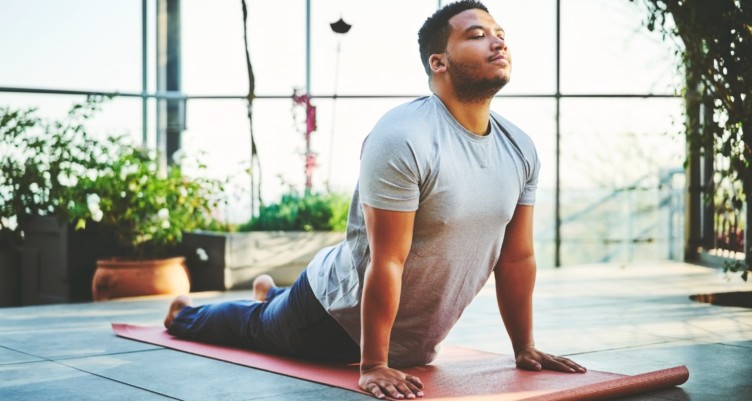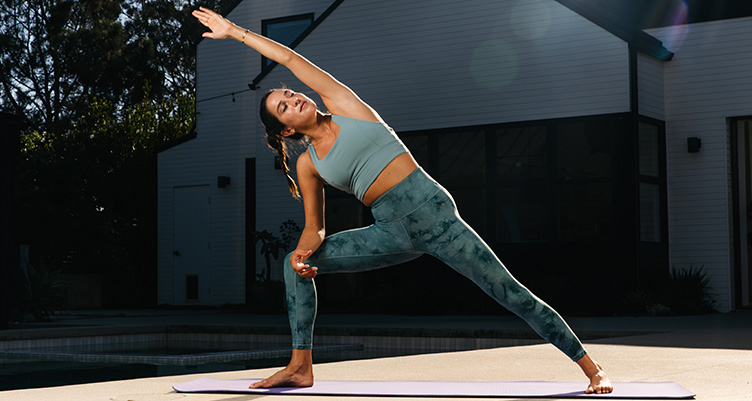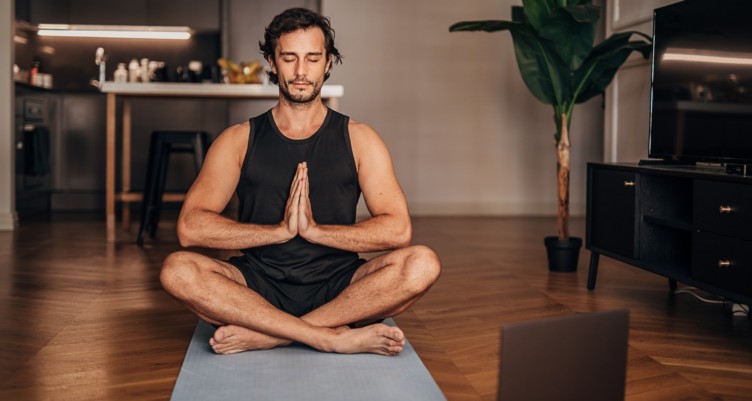Mind-Body Wellness: 8 Practices That Will Help You Balance Your Psyche

- Mind-body wellness practices prioritize the health, well-being and balance of our physical, mental, emotional and spiritual needs.
- Whether it’s attending a yoga class or signing up for a float therapy session, there are many ways to incorporate more mind-body wellness practices and activities into your life.
- Read on to learn more about the various mind-body wellness practices out there today—and how to determine which one is right for you.
You’re laser-focused on hitting the gym after work and ultra-consistent with carving out time for a lunchtime jog or bike ride. But, when was the last time you paid this same level of attention to your mind and your emotions?
If you’re like many people, the answer might be never.
Mind-body wellness can help you take care of your mental and emotional health, just as you care for your physical health. With science-backed benefits like lower stress levels, better sleep and reduced pain, mind-body wellness practices can help you lead a happier, healthier life. Here’s what you should know if you’re curious about mind-body wellness, plus a few ideas to incorporate it into your life.
What is mind-body wellness?

We all understand the health and wellness benefits of taking care of our bodies and staying physically fit. However, it’s just as important to tend to our mental, emotional and spiritual needs, which we sometimes overlook.
Mind and body wellness go hand-in-hand, and you can achieve it through many different activities and practices. Most importantly, you have the flexibility to take things in different directions depending on your personal preferences and your lifestyle.
In conjunction with other treatment methods, mind-body wellness methods are becoming increasingly popular among people with chronic pain, anxiety, depression, insomnia, headaches, back and neck pain, arthritis and other conditions.[1]
Focusing on your own mind-body wellness can help relieve stress, reduce occasional anxiety, boost spiritual and self-awareness and provide moments of mental clarity in our increasingly busy world. In fact, researchers found that mind-body wellness methods can help improve sleep, ease pain and reduce anxiety and depression symptoms.[2] It can also help stave off fatigue and inflammation.[3]
Sounds like a smart practice to follow, right?
Related: Why Self-Care Should Be Part of Your Wellness Routine
8 wellness practices that support mind-body health

You have many choices when it comes to incorporating mind-body wellness practices into your life. Try a few on for size until you find one that feels the most comfortable and supportive for you.
For inspiration, here are eight wellness practices we love that help support mind-body health:
1. Ayurveda
Ayurveda is an ancient natural medicine practice that originated more than 3,000 years ago in India. This practice, which means “knowledge of life” in Sanskrit, operates from the belief that a health issue is caused by some sort of imbalance in a person’s mind, body and spirit.
Today, Ayurvedic treatment can include a cleansing or detoxification process, a special Ayurveda diet, massage, yoga, meditation and herbal remedies. To get started with Ayurvedic treatment, search for a reputable Ayurvedic practitioner nearby who can help you along this journey.
2. Yoga

Though the exact origins of yoga are somewhat murky, this long-standing practice dates back to ancient India and involves a series of movements, poses, breathing techniques and mental practices intended to help create harmony between the body, mind, spirit and environment.
With a little research, or by following along with a YouTube video or yoga app, you can easily practice yoga from the comfort of your own home. And if you’re a social butterfly who’d rather partake in this practice among other people, yoga studios, fitness centers, gyms and spiritual practice centers often offer classes for aspiring yogis.
Worried about getting bored with the same routine? There are many different types of yoga to explore—including Iyengar, Vinyasa and Hatha—that will challenge you in unique ways. No matter what style you choose, though, remember to set a positive intention and focus on unlocking the physical and mental benefits of yoga.
3. Reiki
Originating in Japan, reiki is a form of touch-centric energy healing. Reiki is similar to massage therapy, but reiki practitioners place their hands just above the person or touch them lightly, rather than applying deeper pressure. The overarching goal of this light touch is to help direct healing energy from the practitioner to the participant. Depending on where you live and the popularity of reiki, you should be able to find a reiki practitioner with a simple online search.
4. Tai Chi

Tai chi is an ancient Chinese practice that incorporates gentle stretching and physical exercise. Practicing tai chi, also known as tai chi chuan, means flowing through a series of postures intended to help promote physical, mental and spiritual health.
Tai chi is an ideal mind-body wellness practice if you’re just starting out. It doesn’t require any special equipment and can be practiced anywhere. You can work with a tai chi instructor, or practice at home by yourself. In other words: There’s no excuse not to give it a try!
5. Watsu
If you’ve ever found comfort in taking a hot bath or swimming a few laps in the pool, you may enjoy watsu, a type of water therapy that involves massages, stretching and acupressure in warm water. Created by massage therapist Harold Dull in the 1980s, watsu combines the words “water” and “shiatsu” (shiatsu being a form of Japanese acupressure massage).
To practice watsu, you’ll need to seek out a trained watsu therapist, who will gently move your body in a warm-water pool or hot tub to help ease tightness and relieve tension. If you can’t find a watsu provider near you (or it just isn’t your thing), you can also relax by laying on the Bulletproof Sleep Induction Mat, which can help stimulate acupressure points that promote deep relaxation.†
Related: How to Sleep Better and Manage Stress With Exercise
6. Meditation

Broadly speaking, meditation is the practice of focusing your attention on the here and now and training your mind to return to the present when it inevitably starts to wander. Although there’s a number of different meditation styles, most typically include breathing in and out in a quiet space.
You can practice meditation at home, or you can attend group meditation sessions offered by some yoga studios and other mind-body wellness facilities. There are also numerous mobile apps, such as Headspace and Calm, that can help you learn the art of meditation. So, even if you’ve never attempted to meditate before, don’t feel like you’re alone. Lean on supportive tools (and people) to guide you on your journey to achieving the ultimate level of tranquility.
Pro tip: Want to make the most of your meditation practice? Give your brain and body a combo of science-backed ingredients that supports improved focus and mood. Bulletproof Zen Mode contains adaptogenic herbs and other nutrients that can help ease occasional stress and calm your mind.†
7. Float therapy
A relative newcomer on the mind-body wellness scene, float therapy dates back to the mid-1950s and involves floating in a sensory deprivation tank. These tanks block all light and sound from the outside world, and are filled with saltwater to help you float. This form of mind-body therapy is intended to help promote relaxation, encourage creativity, improve sleep and ease stress.
As this wellness practice becomes increasingly popular, you can now find float therapy centers across the country. It may seem a bit out-of-the-box, but you might be surprised by how calm you feel after your first float.
8. Acupuncture

Acupuncture is a traditional Chinese medical practice that involves inserting thin needles into the skin to help relieve pain and ease stress. Acupuncturists are specially trained professionals who understand where to insert the needles on the body to achieve specific goals or outcomes.
Not fully on board with getting poked with needles? According to the National Center for Complementary and Integrative Health, studies have shown that acupuncture may help ease pain and even reduce the frequency of tension headaches.[4]
How mind-body therapies impact your psyche long term

Mind-body therapies can undoubtedly make you feel good in the moment. Ideally, you can hold onto that relaxed, peaceful feeling for a few minutes or hours afterward. But these practices can also have long-term benefits for your mental health and well-being.
For instance, researchers found that completing an eight-week meditation training program helped improve depression, anxiety and chronic pain over the course of the following year.[5] Similarly, another study found that acupuncture had long-term benefits for migraine-sufferers, including a reduced risk of depression and anxiety and lower medical expenses in the years after their treatment.[6]
When to practice your mind-body routine
There’s no hard-and-fast rule for when you should practice tai chi or meditate. Some of it may come down to your practitioner’s schedule and available openings, or the class schedule at your local studio or center.
If you’re practicing at home or you have some flexibility, try to set aside an uninterrupted period of time that’s dedicated solely to your practice. Turn off your phone (hello, digital detox!), politely ask your housemates or family members to leave you alone, corral your pets into another room and generally free yourself of any potential distractions that are within your control.
For practices like meditation and yoga, find a space in your home, your yard or at a local park that makes you feel comfortable. At home, consider dimming the lights and turning on some serene, wordless music or a white noise machine.
Many people find success in practicing first thing in the morning or right before going to bed. Of course, it depends on your personality and your ability to block out distracting thoughts, so it may not be ideal to schedule your float tank session between back-to-back Zoom calls or right before a huge project deadline. If possible, find a time when you’re already relaxed and can give your practice your full and undivided attention.
You don’t need to set aside huge chunks of time for your mind-body practice, either. In fact, meditating for even 13 minutes a day helped improve participants’ mood, memory, occasional anxiety and ability to focus in a 2019 study.[7]
The bottom line: As much as you work to keep your body physically fit, be sure to also prioritize the health and well-being of your mind, your emotions and your spirit. You might notice a big difference in how you feel and move through the world when you practice this essential form of self-care in whatever way feels best to you.
One of the best ways to take care of your mental health? Learn how to shed negative thoughts from your mind. Here’s how to start thinking more positively—and why you should.
Sign up for early access to sales, product launches, the latest Bulletproof news and more!



